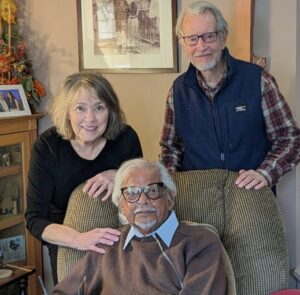When I arrived in Rochester two and a half years ago, I felt elated to find so many beautiful hiking opportunities nearby. I’d lived for the previous three years in Central Illinois, where a few isolated woods dot the expanse of corn and soy monocultures.
One of the nearest large forests – Hoosier National in Bloomington, Indiana – was roughly as far from Champaign as the Adirondacks from Rochester. Here, in Western New York, I’d finally feel at home. I wanted to hike all the time – planning to enter the woods almost every week.
These plans have never come to pass, but I have visited many parks in our region. I took joy in finding anew park for each hike – a huge change from the scarcity of places to explore in the Midwestern plains. After a time, though, I came to miss one aspect of hiking the same parks over and over again: you see them in all seasons.
In the spring of 2013, I decided to explore the eastern side of Letchworth State Park, south of Mount Morris, New York. The western side of the park is highly developed, allowing sightseers easy access to the massive cataracts that run through the park. Comparatively speaking, the eastern park is quiet, unpeopled, and rugged. Looking at an aerial map, I decided to hike down Dishmill Creek – which runs a winding course through woods and fields before emptying in the Genesee River below.
I was stunned by the beauty of the hike – the creek poured over dozens of small waterfalls and ran through shady gorges. As I trudged through the waters, crayfish and minnows darted away from my feet. Mesmerized, I decided I would return to Dishmill Creek. Later in the season, the creekbed fed me – wild red and black raspberries grow through the creek’s clearings, along with mustard and other wild edibles. I decided this would be the park I would hike in all seasons. I returned with a friend in the late summer and returned with more friends next spring. Mark, Deborah and I shared a lunch of vegetarian sushi next to the largest waterfall on the creek, which was sublime. I came alone in the fall, perhaps the most captivating season at Dishmill Creek, with auburn leaves drifting down the creek through golds and greens and blues and whites and blacks and browns and grays.
After my autumnal hike, I committed to revisiting Dishmill this winter. I would then know the park in all four seasons, and the idea excited me. I grew up in Florida, so the winter of my inner thoughts is magical and beautiful and comforting. On the morning of March 8, 2015 – the final morning before significant melts of the year – I decided to head to the creek and capture my Narnia-like visions of the place on digital film. Temperatures were just above freezing, so I layered myself appropriately, found my snowshoes and drove down to the park.
No more than 20 minutes of hiking had passed before it occurred to me that this hike – which I’d anticipated for more than a year – wouldn’t be as thrilling as I’d hoped. The reality of the forest in late winter differed from the imaginings born of my sun-baked Floridian brain: it was sterile, stark and somewhat dangerous. With about two feet of snow on the ground, the whole forest held a blazing white sameness, completely swallowing the creekbed.
If I didn’t know the hike so well, I would have taken it as unremarkable. I stood still for a moment and looked down at my snowshoes as I angrily realized several of my needs would likely be unmet by this hike: beauty, comfort, creativity, ease, and safety. The hike would be hard going but would present few opportunities to use my camera. It would be cold, wet and laborious.
After cursing the forest aloud, I decided to press forward. I accepted that some of my particularly life-giving needs would not be met by this hike. I reflected that while most of us don’t volunteer for situations in which our needs cannot be met easily, such situations are unavoidable in life. Not every disease is cured. Not every relationship works out. Not every test is passed. Under these circumstances, the application of nonviolence is especially urgent. It’s easy enough to approach someone nonviolently when we think our needs can be met. Yet, in hopeless situations, when our grief and loss become overwhelming and we can find no way out, violence can so easily re-enter the picture. Violence is our last resort, but it is our favorite last resort.
Ninety minutes pa ssed before I arrived at my most beloved waterfall on Dishmill, little more than a mile from the road. I removed my snowshoes and carefully slid down the gorge to the falls’ plungepool, where I’d taken several stunning photos in previous seasons. As I expected, the view was unremarkable. The bright greens and deep browns of the small gorge’s moist microclimate were completely absent. The waterfall wasn’t large enough to properly freeze midair, so it just looked like a snowy wall. Dull ice stood around its edges, having lost its luster in the above-freezing temperatures.
ssed before I arrived at my most beloved waterfall on Dishmill, little more than a mile from the road. I removed my snowshoes and carefully slid down the gorge to the falls’ plungepool, where I’d taken several stunning photos in previous seasons. As I expected, the view was unremarkable. The bright greens and deep browns of the small gorge’s moist microclimate were completely absent. The waterfall wasn’t large enough to properly freeze midair, so it just looked like a snowy wall. Dull ice stood around its edges, having lost its luster in the above-freezing temperatures.
What I expected to be the most visually compelling portion of my hike was nearly featureless. I closed my eyes in defeat and then heard the creek bubbling under the snow as it ran along the south wall of the gorge. I stood for several minutes and enjoyed the soft sound before climbing back up to my snowshoes.
As I trekked back to my car and out of the forest, I gave thanks for the hike. I realized quickly that it wouldn’t be what I wanted, but I had committed to seeing my photographic muse in every season. On that day, it meant continuing a hike I knew would be difficult – out of respect to the forest and to the promise I had made myself. In the end, my needs for beauty and peace were well met – and they would not have been if I had turned back early. What seemed hopeless was not.
All of this makes me wonder about our commitments to our companions, our communities and ourselves. Too often, I find myself in a place in life where my needs aren’t being met and I fear they cannot be met. I find myself with questions I cannot answer and pain I cannot ease. In the past, I’ve turned away from these questions and this pain – anger quickly morphs into some subtle form of violence against self or the other. These days, I try to sit with that anger, find quiet and wait. I pray and I listen and I try to accept that months or years may pass without answers to certain questions. Sometimes, I feel overwhelmed by this – fear sparks and then demands kindling. I do my best to maintain my silent vigil.
I think Dishmill Creek offers some lessons about this vigil. Within a few weeks, that bare basin will be visually arresting yet again. The snow will melt and the waterfalls will flow. The moss will grow green, and the brambles will once again offer fruit. Life comes at us in seasons, and some of those can be harsh and indefinite. At times, we wait without knowing what we’re even waiting for. The beauty of nonviolent practices is that we can wait peacefully. We can turn away from life-destroying alternatives and towards patience. In patience, we give the universe a chance to catch up with our needs inventory – or to help us redefine our needs. While I often find cultivating that patience frustrating, it becomes more exciting every day.
By Matthew Townsend




